A revolutionary way of breaking down the Zapruder film is yielding spectacular results. By reducing the timeline to its finest speed, it is now possible to analyze the film as never before. As is common in the photographic record of the JFK assassination, and as suspected for years, the film has been massively edited, where even Dallas Police Department Motor Jockey Douglas Jackson was quoted in the Newcomb Tapes in 1971 as saying : “Ah, Life magazine printed that picture, of that film, but its been cut up,(23:35) it’s been edited, part of it’s been cut out.” The alterations are far too many to list here. In the past, perhaps not enough attention was paid to what was actually going on inside the limousine, however, with the help of the Newcomb tapes, a heretofore unknown event had been ignored — as crazy as it may sound — a second Secret Service agent inside JFK’s Lincoln Continental.
In the Newcomb tapes, both Bobby Hargis and his supervisor Stavis Ellis talked about the second agent inside the limo besides Clint Hill. In searching for evidence of a second agent in a digitized version of the Z film readily found online, more was found than any JFK researcher could have bargained for. Crystal clear images reveal the extent of the airbrushing in perhaps two thirds of the film. A new approach in analyzing the Z film involves treating it as any other data stream which can be streamlined for the purpose at hand. Instead of “frames” we use “data snapshots” in our reinterpretation. Here is the front end of a popular program with which the film can be broken down to its granular components:
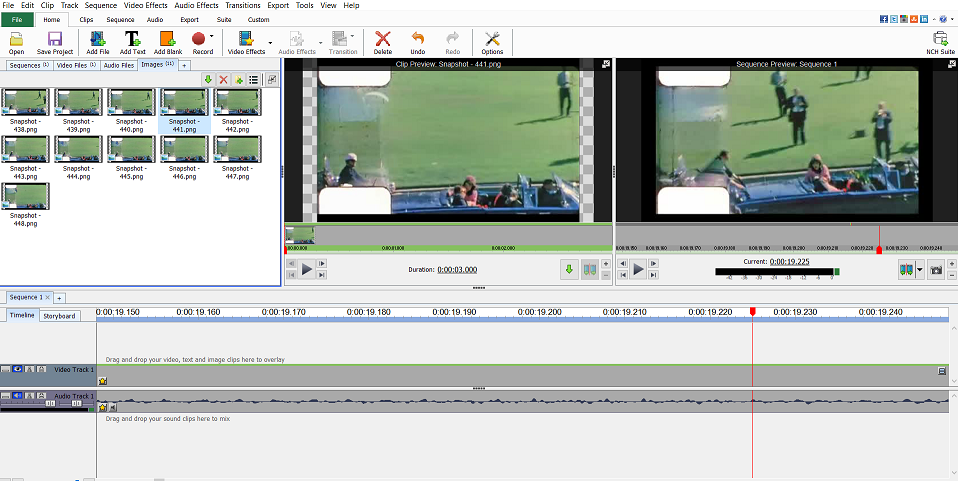
Here is a nice rendering, however, as we will shortly see, obvious alterations using airbrushing techniques available at the time jump out in the analysis.
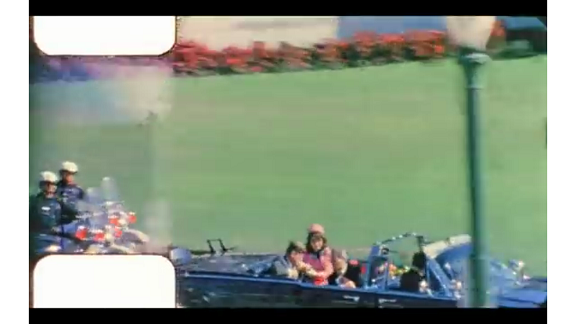
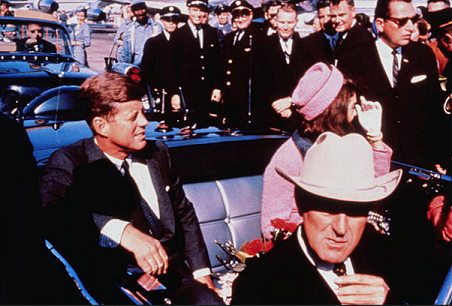
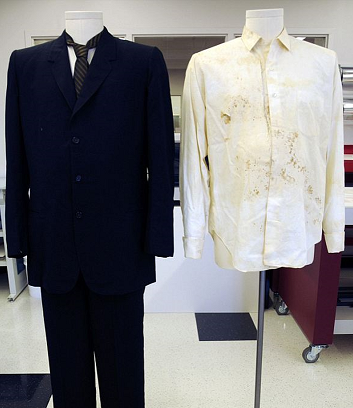
Frame reversal
The first anomaly appears to be a reversal of frames at the 18:10 mark. The snapshots that show this are 289-291. Again, the reader should note that these are not Zapruder frame numbers, rather a sequence of “snapshots” within our data stream that can be taken with the software as it establishes a numbered sequence of its own:
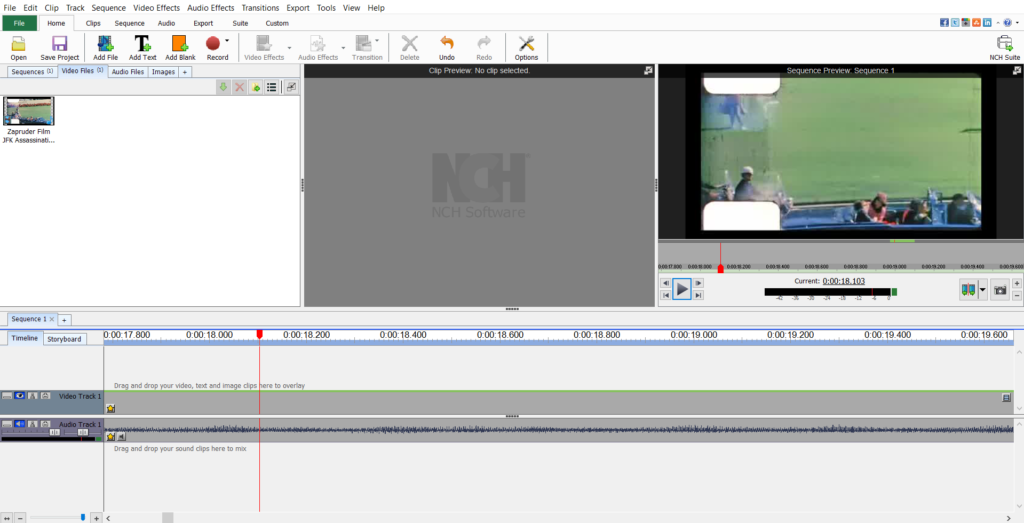
This is Snapshot 290 at the 18:18 mark:

This is Snapshot 291 at the 18:20 mark:
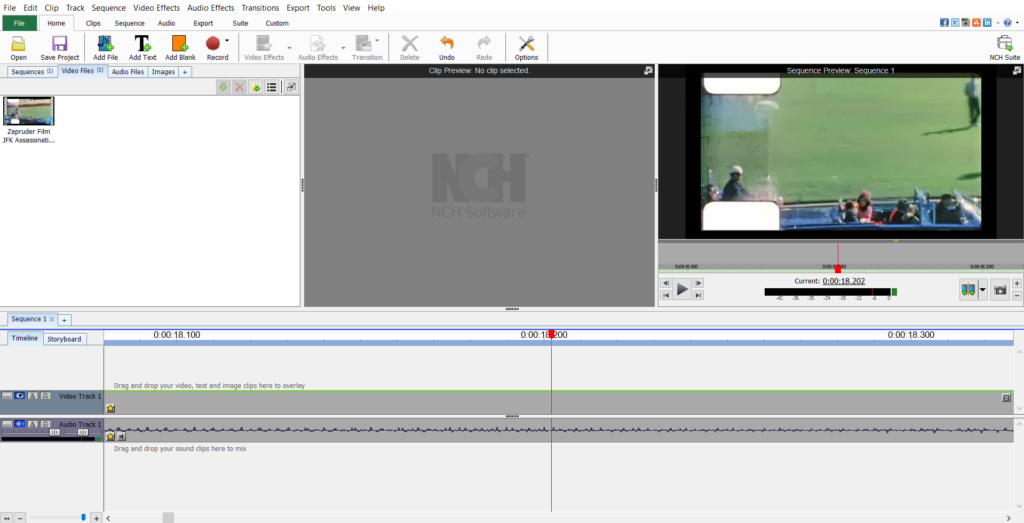
With the following results in the same order 289-291:
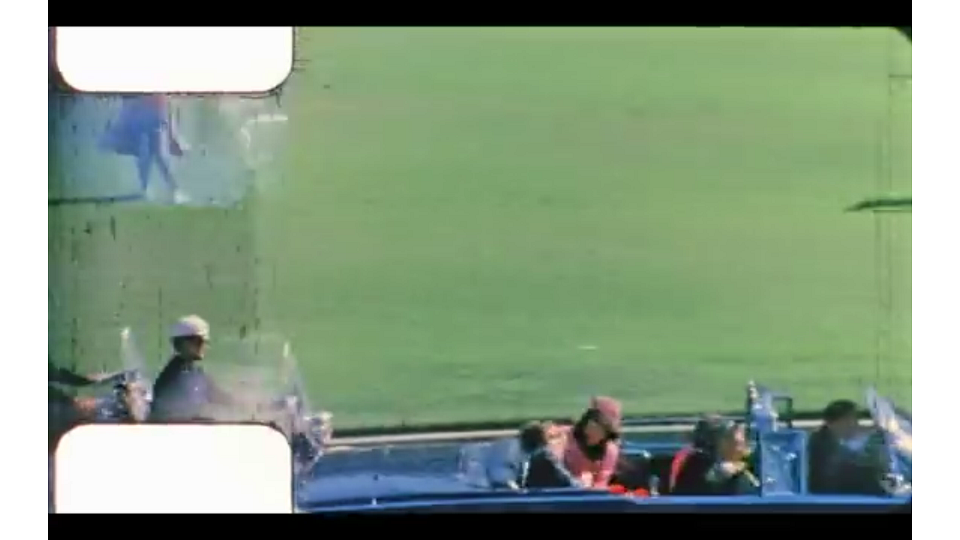

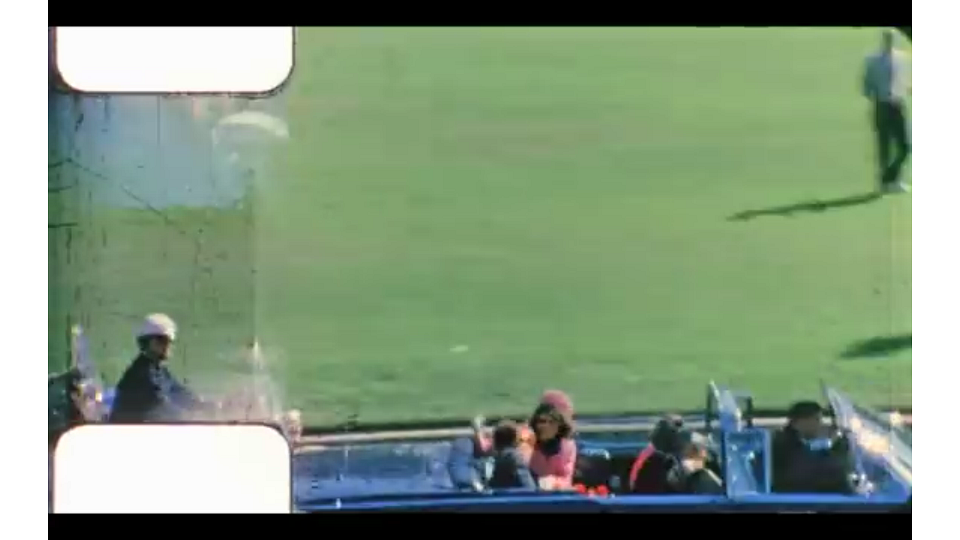
This animated gif includes Snapshots 289, 290, and 291, showing the limousine lurching backwards at 291 where Jackie lifts her right arm:
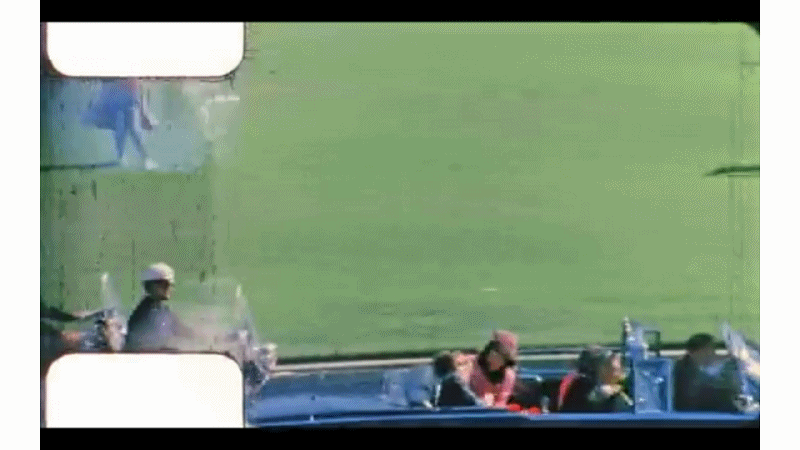
Airbrushing alterations
As a baseline for this study, this Titus photograph shows the bouquet of yellow roses carried by Nelly Connally on 22 November 1963. It also shows the color of suits worn by Kennedy and Connally:
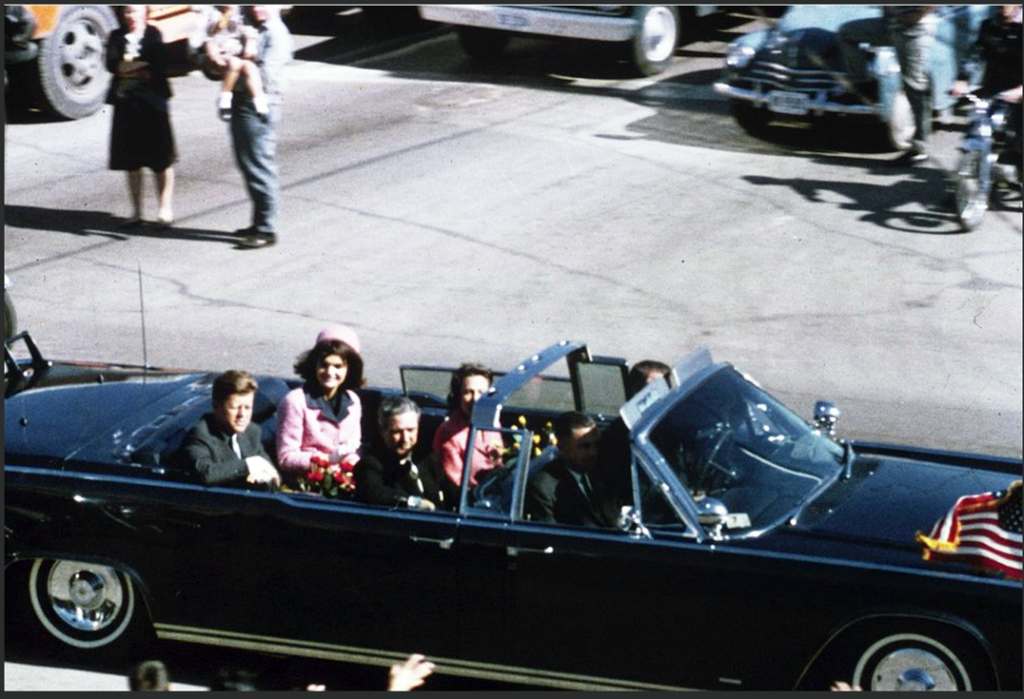
But in the Z film, it explodes into a bizarre greenish haze, obliterating everything beneath it. It’s visible in at least 30 snapshots. Even more important is the fact that the person in the Connally position is not wearing a black suit, opting instead for grey, as shown below and beyond:

The red outlines shown here present a shocking array of amorphous, non-related figures, strategically and critically placed to mask what appears to be that second agent in the limousine cited by Hargis and Ellis. Moreover, there has definitely been retouching of JFK’s back, perhaps in an attempt to obscure blood oozing from a bullet too low to be in accordance with the SBT.

Second Agent in the limo
In the Newcomb Tapes, Bobby Hargis and Stavis Ellis stated the following:
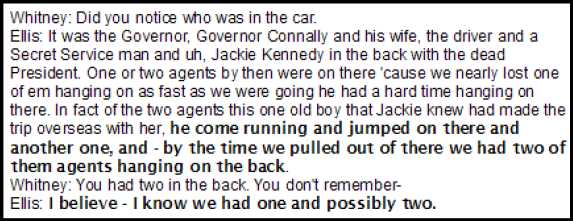
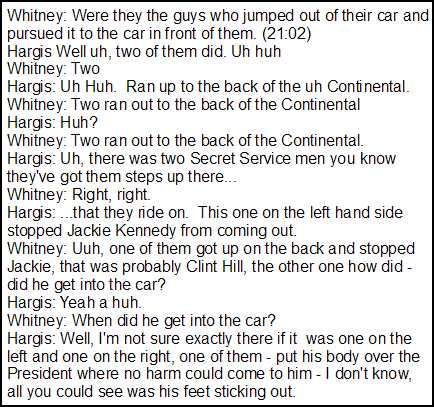
Over the years, JFK researchers have coined the phrase that “extraordinary claims demand extraordinary evidence.” Indeed, searching for, finding, and proving that a second agent entered the JFK limousine on Elm Street is a high bar to clear. The next part of this post will attempt to clear that bar. It must start with the analysis of John Connally and his wife Nelly, as we follow their movements and positions as they both tumble towards the floorboards of the limo, notably Connally falling backward to his left and face up into the arms of his wife. At this point, we get two essential markers in trying to prove our hypothesis: Connally’s grey hair AND the color of his suit jacket — a very dark and black color, as seen in these images where he is identifiable:

In the image above, Connally has not been shot. In the next snapshot, he is visibly reacting to being shot, possibly from three different directions and becomes collateral damage as the prime target is JFK.
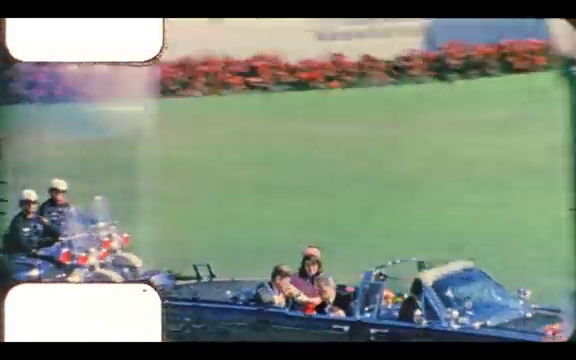
Bear in mind, however, that the 46 year-old Connally has sustained bullet wounds as seen here, in four major areas of his body. In Medicolegal Investigation of the President John F. Kennedy Murder (1978) , pg 94 we get the following “In going through Connally, the following sheets of skin were perforated: back, anterior chest, anterior arm, posterior arm, thigh.” This CD 1134 report shows the seriousness of his wounds.

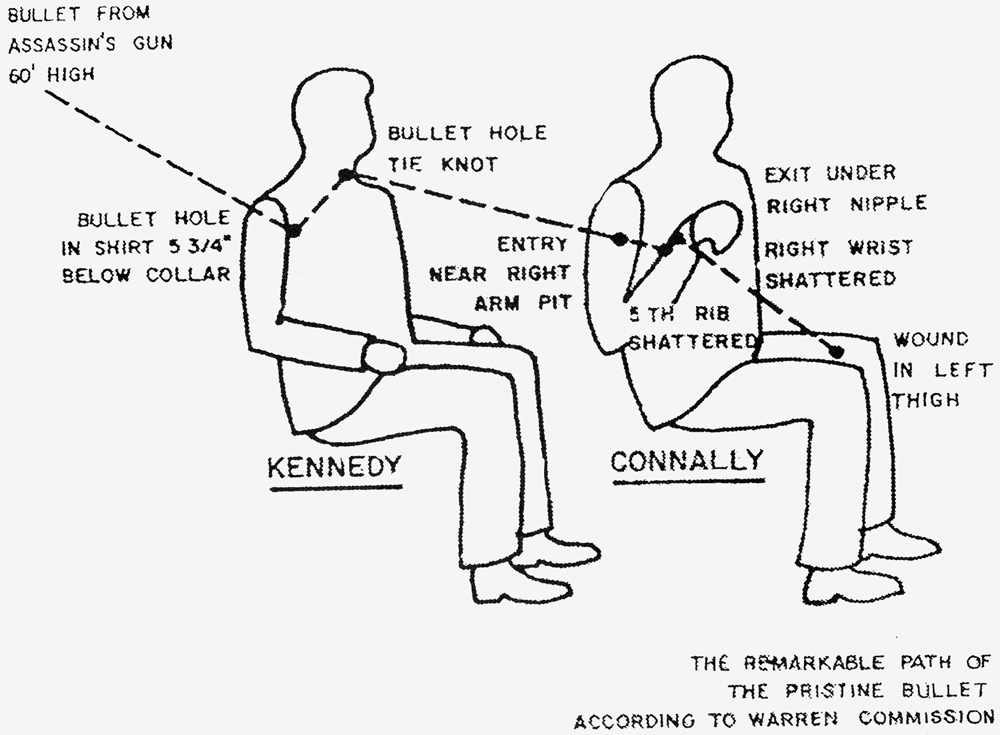
A perforated lung, known as Pneumothorax, is an extremely painful condition where the mere effort to breath is agonizing in itself. That is why tubes are inserted between the ribs to reduce pressure and drain the excess edema and liquid that the body generates in response. It produces the following symptoms and takes weeks to recover:
- Sharp, stabbing chest pain that worsens when trying to breath in.
- Shortness of breath.
- Bluish skin caused by a lack of oxygen.
- Fatigue.
- Rapid breathing and heartbeat.
- A dry, hacking cough.
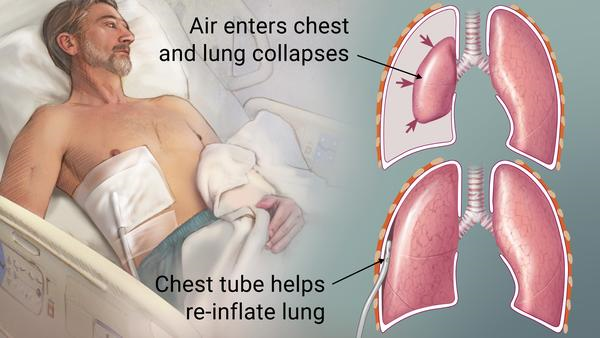
There must have been a lot of pain to endure and bullet holes and bleeding to deal with. Would Connally have been able to sit up and shift around the limousine like we see our mysterious friend do in the Z film? Here’s what his shirt looked like from the bullet that went through him showing the avulsed point of exit:
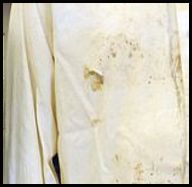
This next image is Snapshot 280 which is the equivalent of Z312.
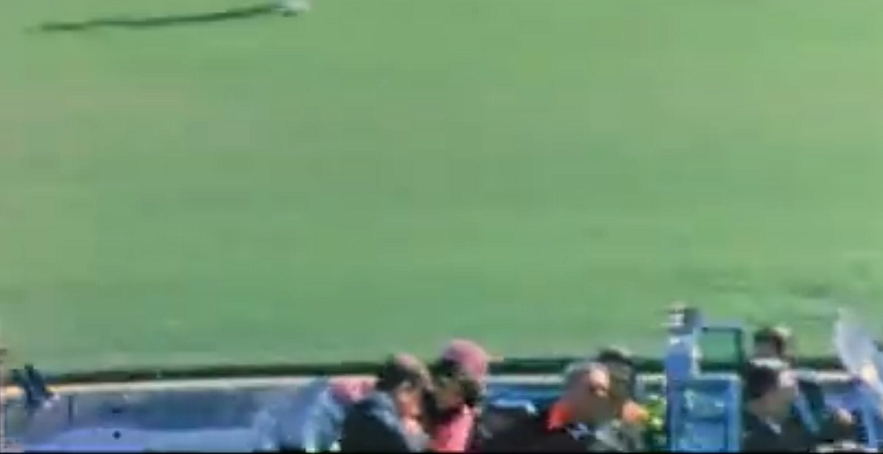
Our Snapshot 281 is the equivalent of Z313 where JFK’s head explodes. Again, the point of showing this is none other than to establish the movements of the Connallys:
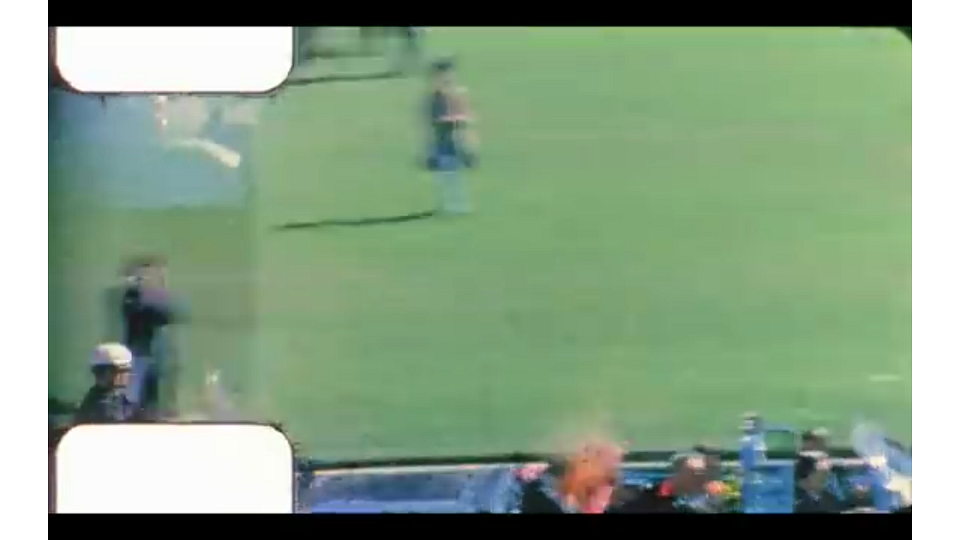
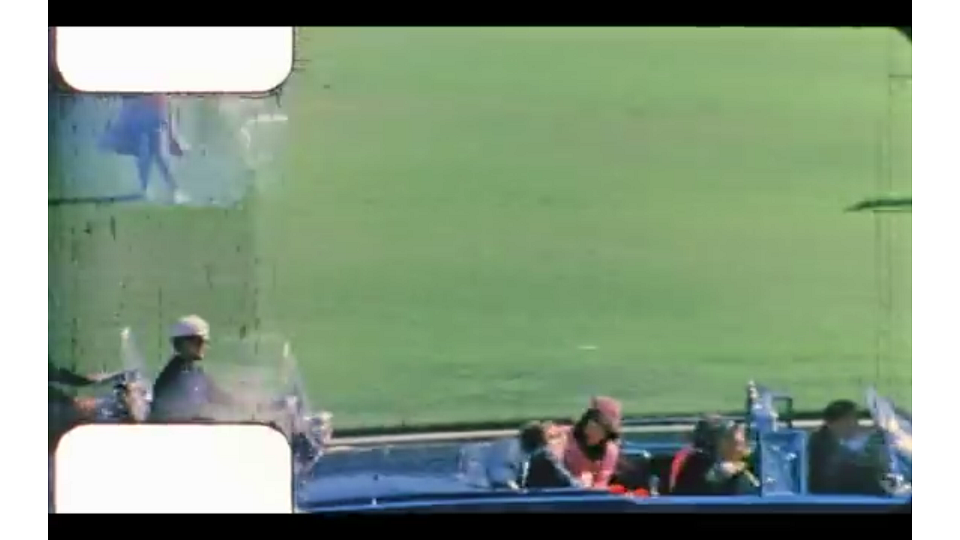
A badly wounded John falls into Nelly’s lap, all the while showing that grey top and black suit jacket which have earlier been established as crucial identity markers.
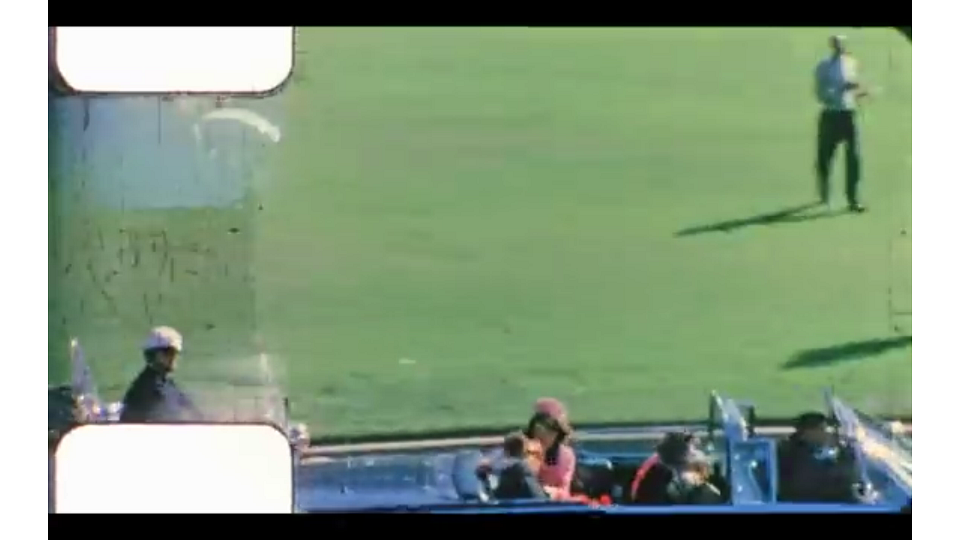
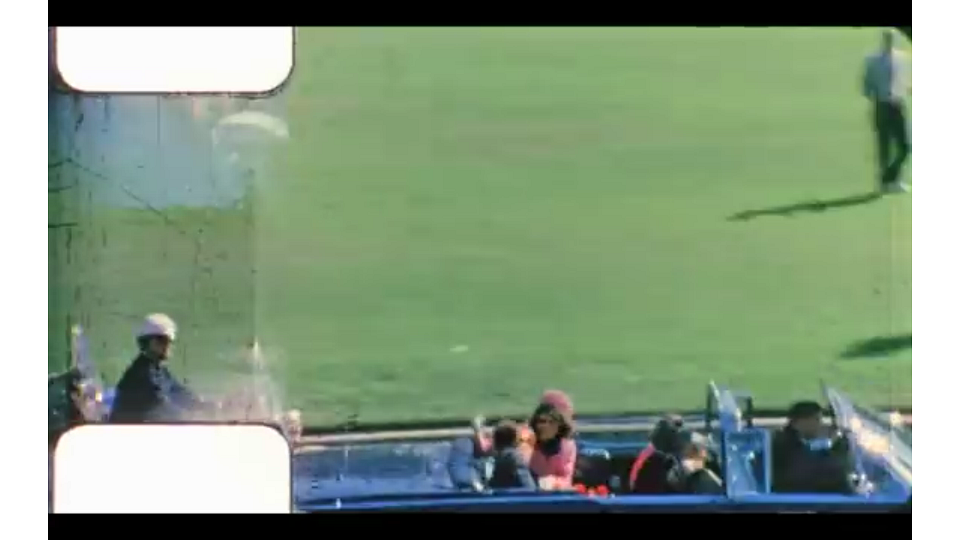
By Snapshot 300, it becomes obvious that dark airbrushing is concealing something going on over the Connallys:
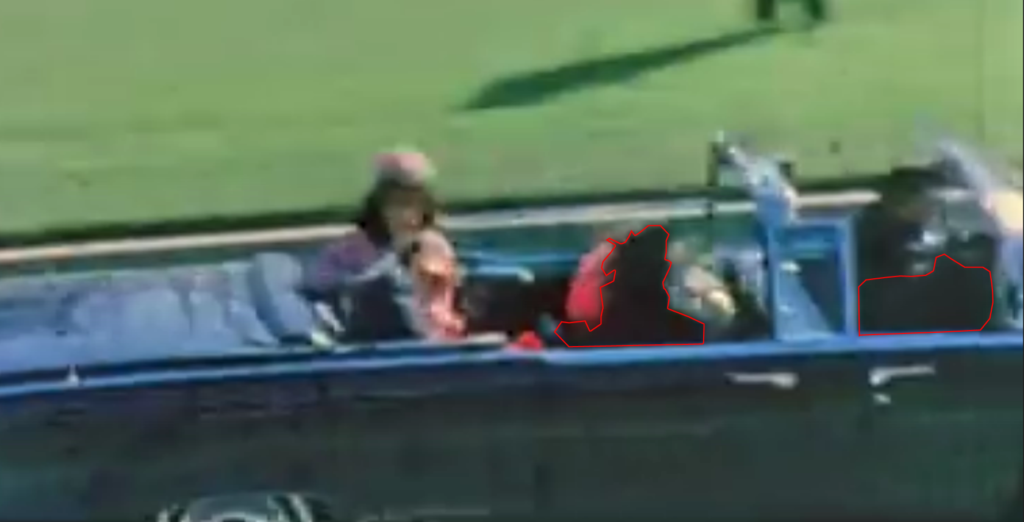
In Snapshot 303, we begin to see evidence of someone’s right arm and shoulder emerging from under the paint job. As noted above, the color of his suit coat is grey, not black, as worn by Connally:

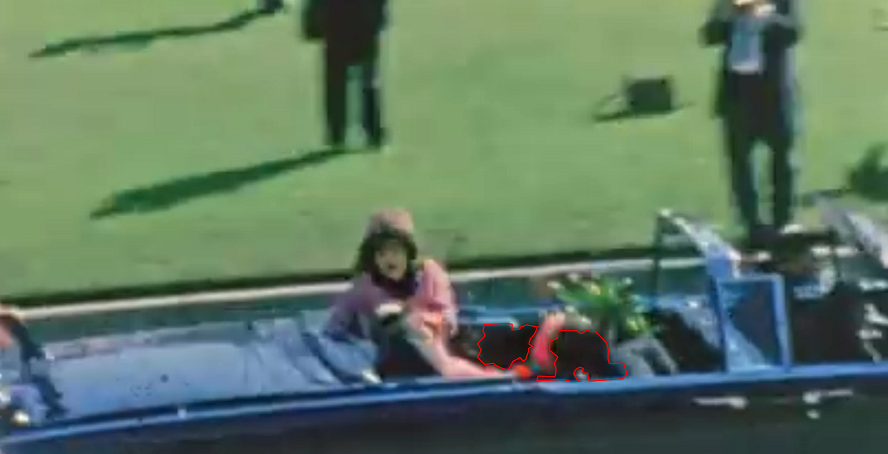
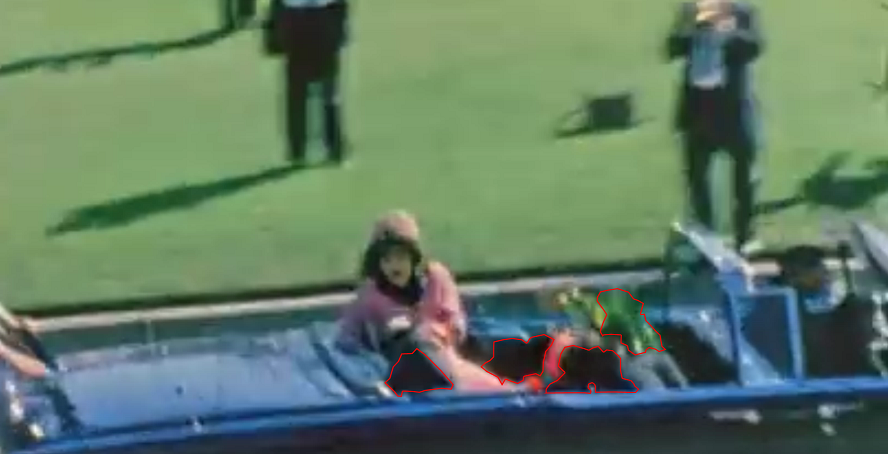
Snapshot 325 shows more of the figure with the grey-colored jacket rising from the ashes like a Phoenix bird!
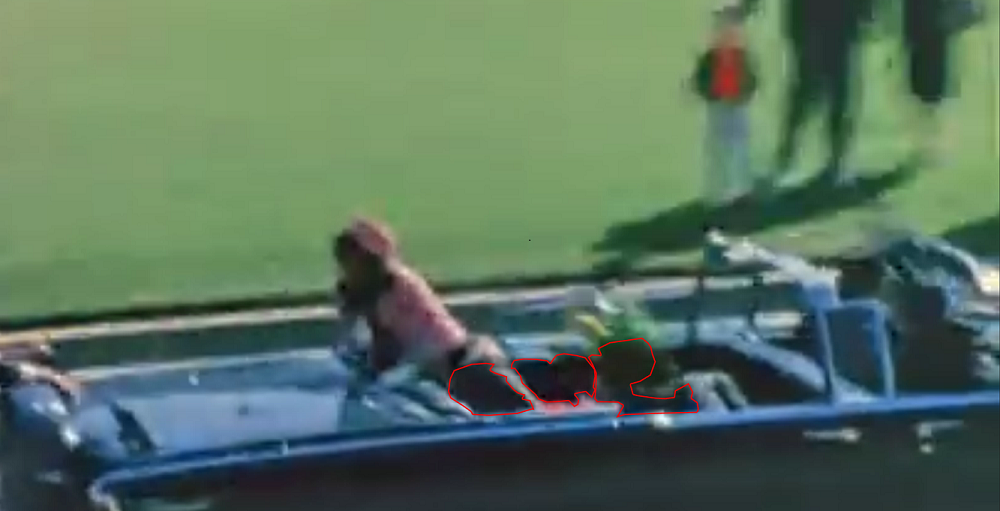
Snapshots 336 and 337 confirm this is not the seriously wounded John Connally, where we are able to track his movements as he looks down, then back, then forward, and back again in what appears to be an effort to choreograph what’s going on inside the limousine. The Kelly green airbrushing appears suspended in air as it changes in shape and intensity:
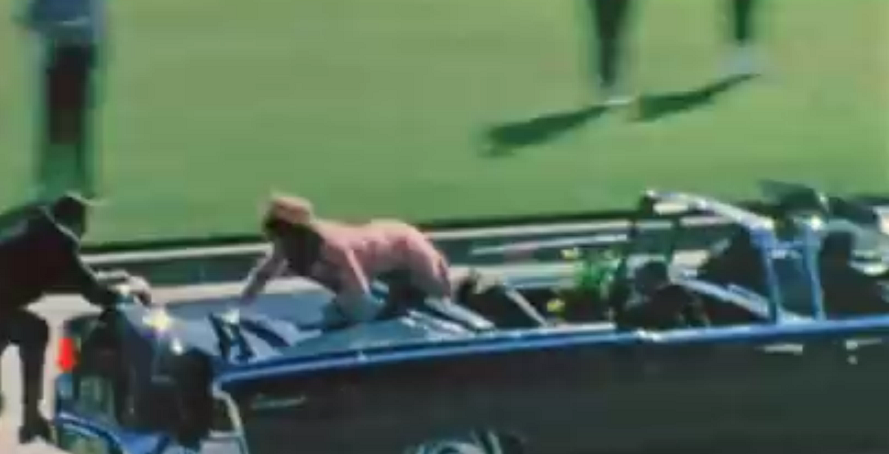

This next two-Snapshot sequence (355-356) shows the agent looking down, then immediately looking back as he appears to be making his way into the back seat. He is a young guy who is moving at will and does not look like someone who has been shot three times. The marker mentioned earlier, the grey hair, is not seen here at all:
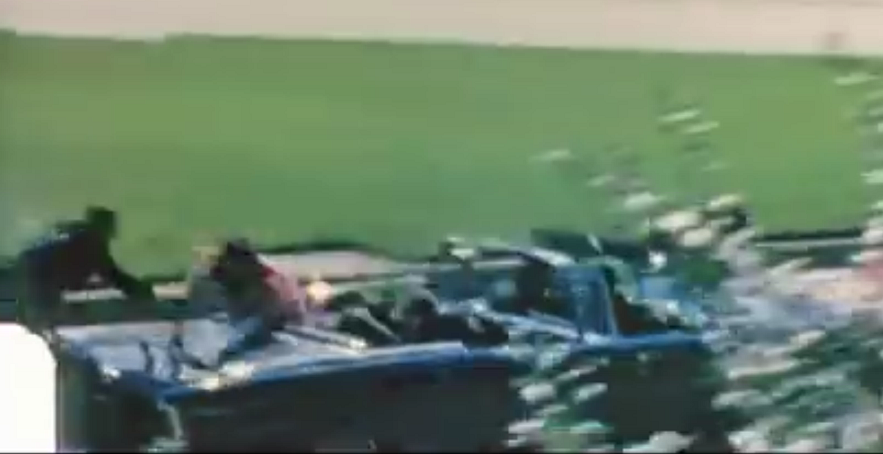
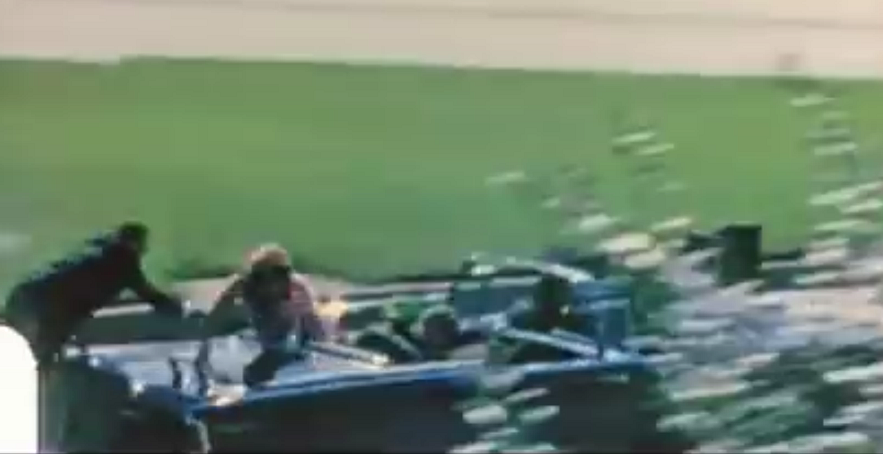
Finally for good measure, we find the agent now in the back seat in these two snapshots (410 and 411) right before entering the tunnel of the triple overpass.
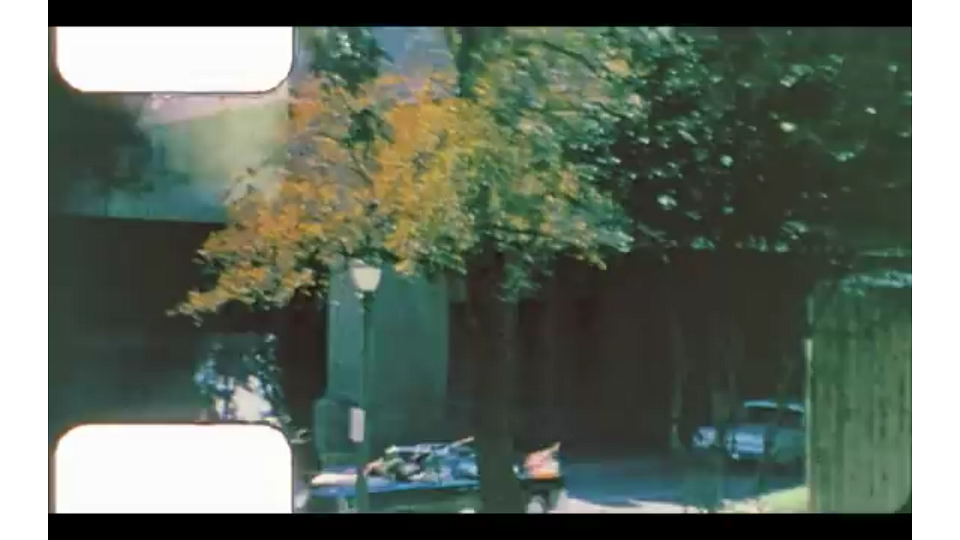

When did all this happen?
In order to try to establish when and how the second agent entered the limousine we have to go back to the Newcomb Tapes and what Hargis, Ellis, James Chaney, Douglas Jackson, and B.J. Martin had to say about the limo stop:
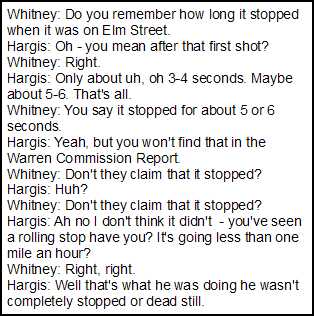

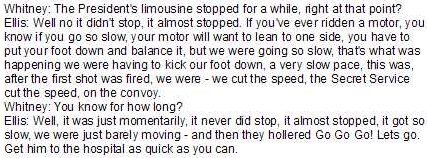


What happened after the limo stop
Both Douglas Jackson and James Chaney spoke about agents and officers dismounting from the Queen Mary and surrounding the JFK limousine after the limo stop. The probability that this is when the second agent entered the limo would have been very high. We cannot dismiss what both of them reported and here you can listen to their own words:
“There was four people that come out of that follow up car and run out to either side of that Presidential limousine with rifles of some type.” —Douglas Jackson
“I don’t know whether the lead car ever stopped or not but I know that the uh, pardon, the second car, the one behind them,..apparently did because it was officers that run from the left hand side, in front of me.” —James Chaney
A good indication of when this all happened has been shown above, where obfuscation of snapshots with evidence of airbrushing begin to populate the interior of the limousine. For those who undertook this endeavor, it had to have been quite the Sisyphean task because of the number of frames that had to be painted over and altered. Notwithstanding the effort, sixty years later we are now able to detect the incredible amount of work involved. AI will not be needed to figure this one out.
The fact that the DPD Motor Jockeys were ignored by the Warren Commission says a lot about how fearful the commission was to get their true stories. We come full circle here. The most important and closest witnesses, Chaney and Jackson, had the most important testimony to tell had they been allowed to appear before the Warren Commission. From what we have seen in the historical record, they never had a chance. Thanks to Fred Newcomb and the Newcomb Tapes we are now able set the record straight.
